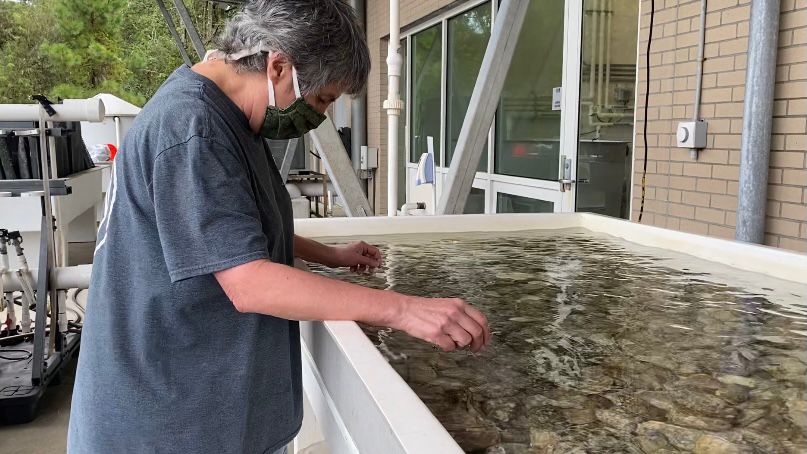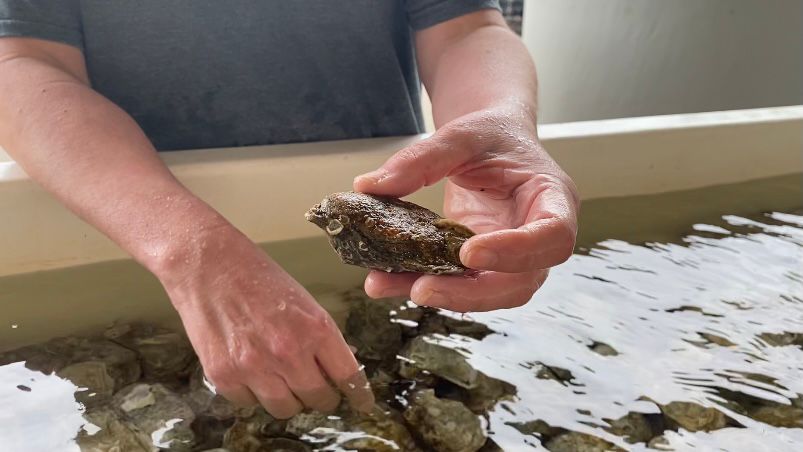WILMINGTON, N.C. — Oyster week is every week at UNC Wilmington's Shellfish Research Hatchery where the staff is in the process of growing the next generation of oysters.
What You Need To Know
N.C. Oyster Week marks the start of wild oyster harvest season
The research hatchery is aiming to relieve the demand on the wild oyster populations
Oysters take 2-5 years to reach maturation in the wild
Dr. Ami Wilbur spends her days trying to understand what genetic combination produces the most resilient oyster for North Carolina's waters. At the hatchery, the staff is creating new lines of oysters from samples collected from all up and down the Carolina coast.

“The research to produce oysters that would grow well in North Carolina waters would help to foster a sustainable aquaculture industry, which would be economically beneficial and ecologically beneficial,” Wilbur said.
It can take an oyster anywhere from two to five years to mature in the wild, but in the hatchery, they can have a full-grown oyster in 18 months, which would help to ease the demand on wild oyster reefs to supply a food source.
“Then we pick the best and brightest of that bunch and produce the next generation,” Wilbur said.
Wilbur says oysters used to be the number one crop in North Carolina, but over-harvesting and changes in the ecosystem have caused a decline in the population in recent years to just a fraction of what it once was.

“All this development on the coastline, it changes what runs off into our coastal waters,” Wilbur said. “Some of that is not helpful to oysters.”
Oysters are known for their benefits to the environment, providing natural filtration, erosion protection and habitat for many species, but the benefits extend to humans as well. This particular shellfish contains a wide range of vitamins and minerals not often found together in other foods.
“Oysters are really a nutritious food,” Wilbur said. “They're very low in fat and calories so they're good for your diet. They're very high in things like Vitamin D, which is very hard to get from animals and nature — high in zinc, copper, selenium, B12 — all of which play roles in your immune system, cardiovascular system and a number of other very important critical physiological roles.”



